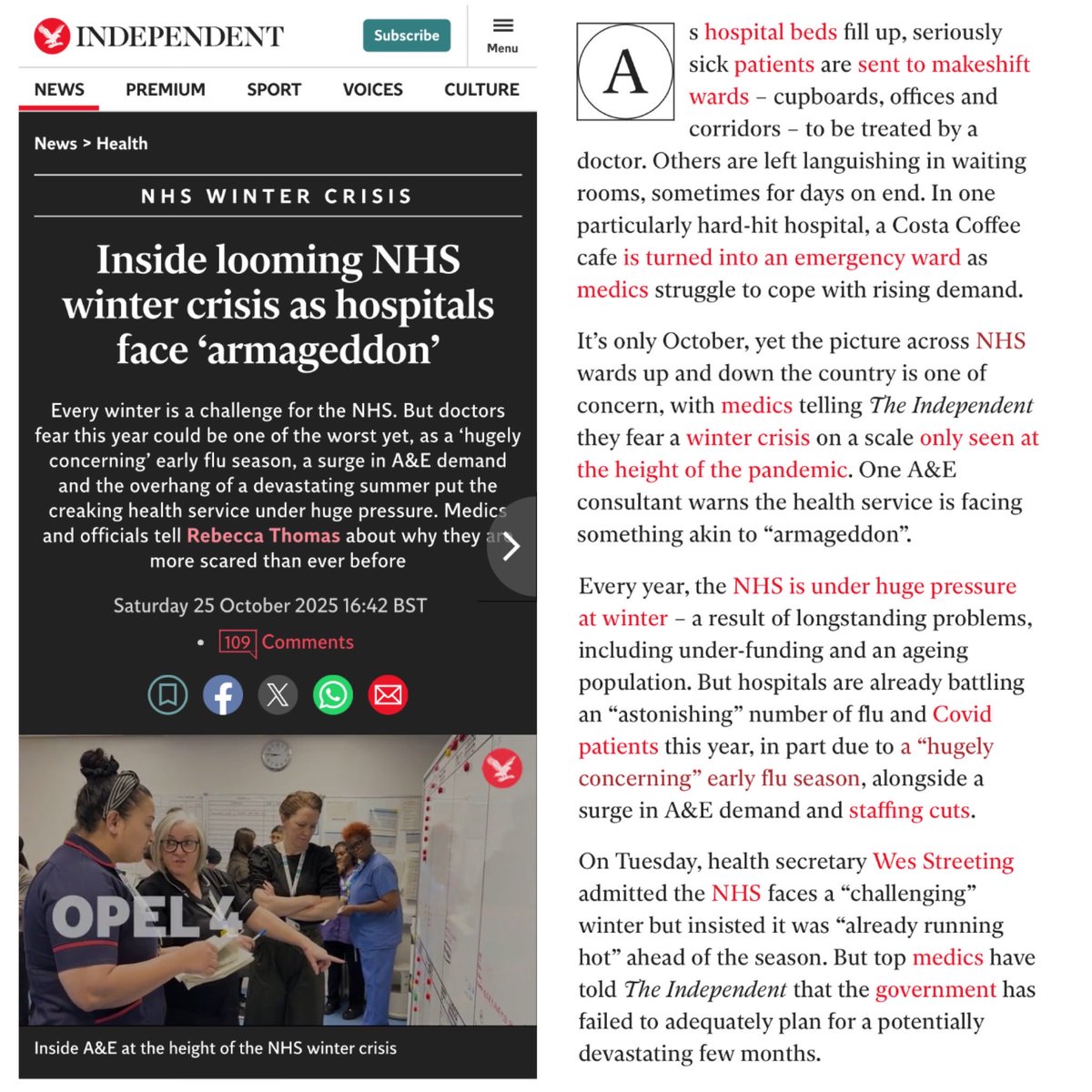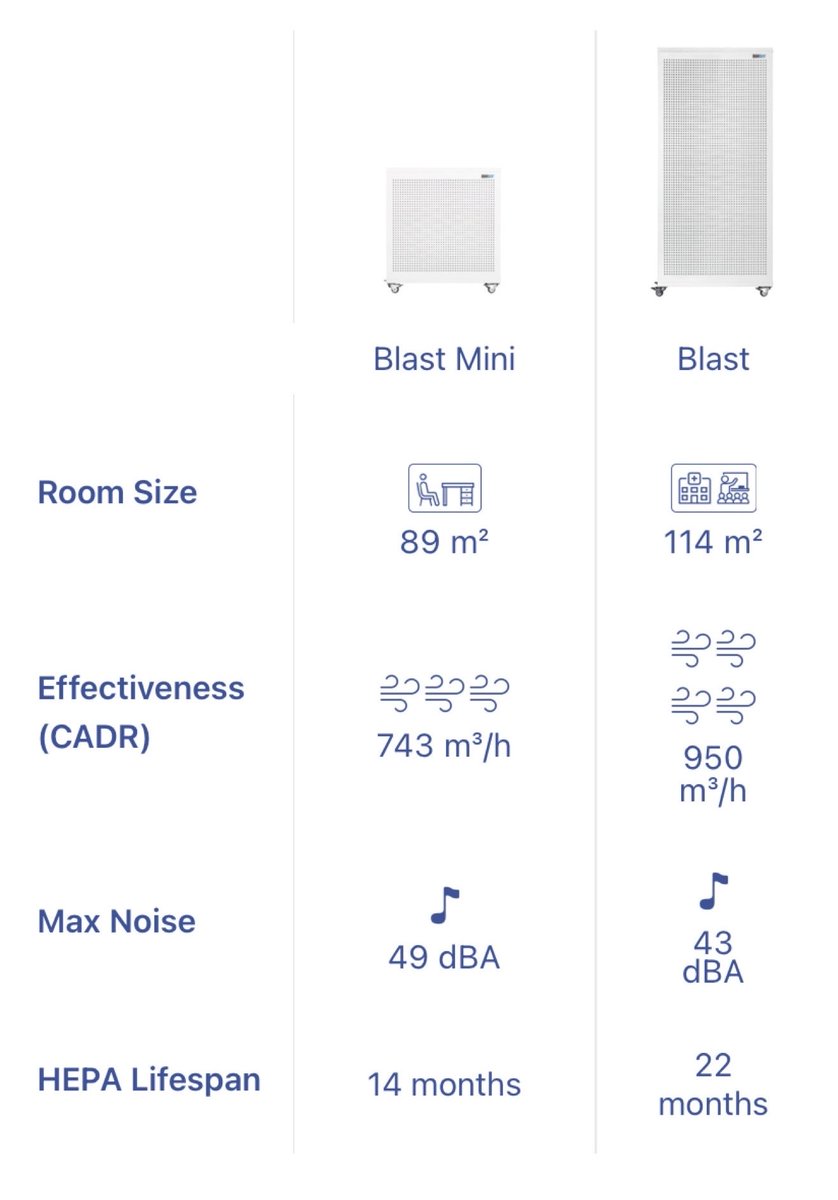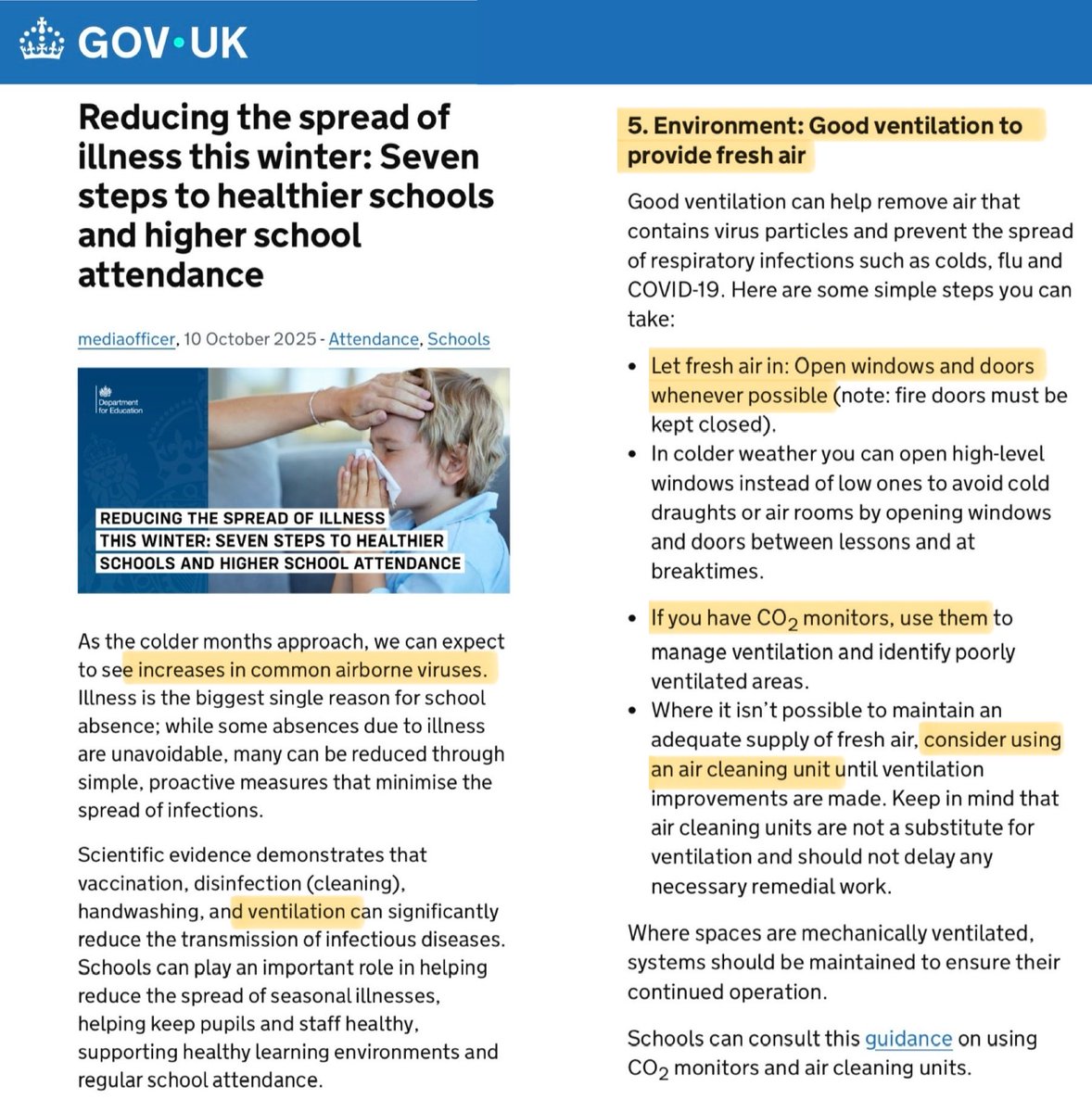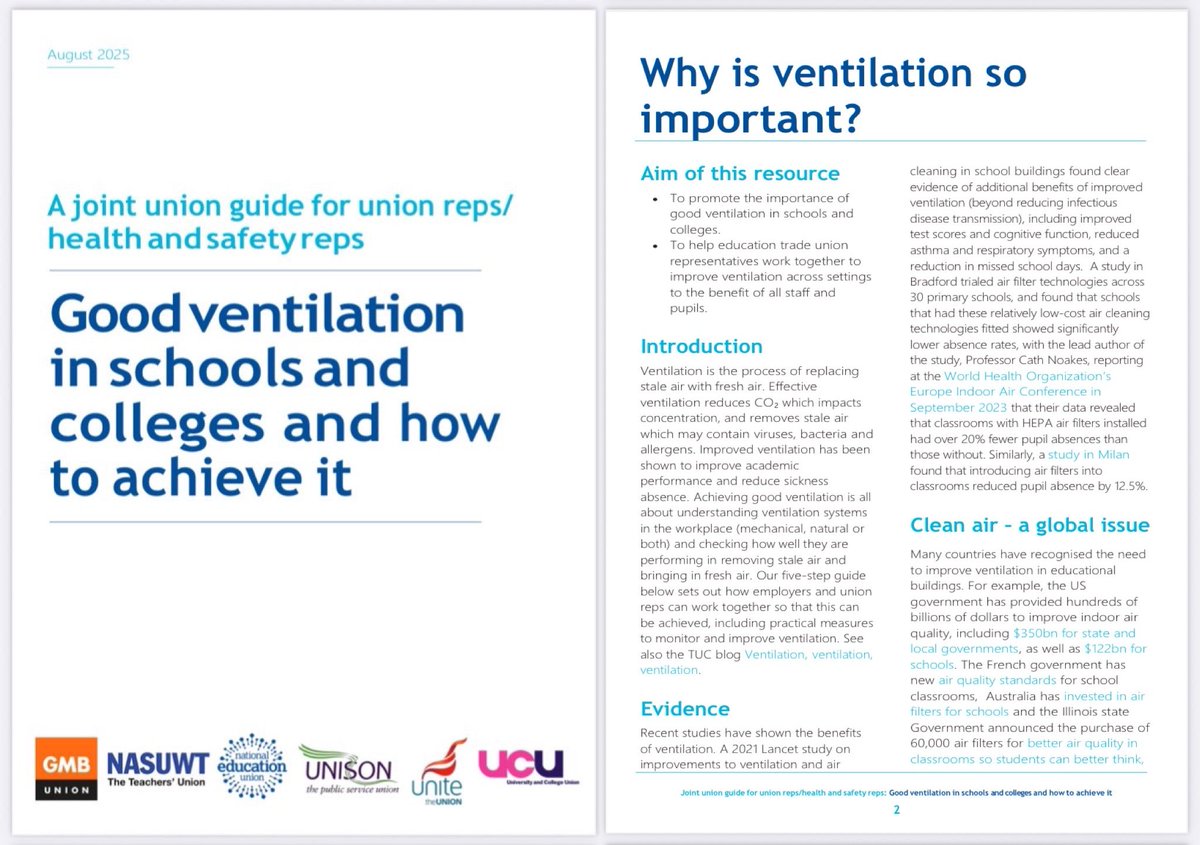COVID WASTEWATER IN EUROPE, a thread 🧵
Covid prevalence is rising fast in England.
Our Covid wave is only just beginning, but other European countries are further along the curve.
In this thread, I take you on a whistlestop tour through Europe to see what’s been happening...

Covid prevalence is rising fast in England.
Our Covid wave is only just beginning, but other European countries are further along the curve.
In this thread, I take you on a whistlestop tour through Europe to see what’s been happening...
https://twitter.com/_catinthehat/status/1737802533622452273
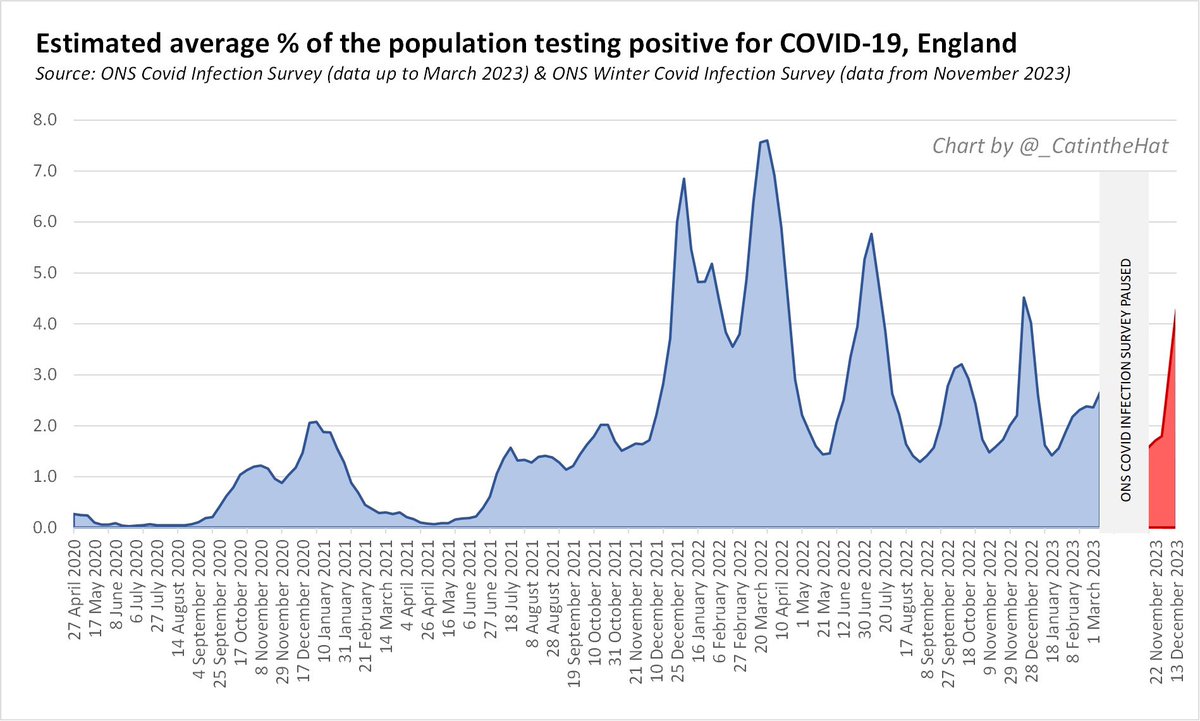
It’s important to note that Covid waves impact different countries in different ways, depending on many factors, including:
📍length of time since last big wave
📍% of population recently vaccinated
📍mitigation measures taken by government
📍population density
…and many more.
📍length of time since last big wave
📍% of population recently vaccinated
📍mitigation measures taken by government
📍population density
…and many more.
So, with that in mind, let’s take a little tour around Europe:
1. THE NETHERLANDS 🇳🇱
In the Netherlands, they’re currently seeing the highest EVER Covid wastewater signal.
And it’s not just a bit higher than the previous max - it’s a LOT higher!
coronadashboard.government.nl/landelijk/rioo…

1. THE NETHERLANDS 🇳🇱
In the Netherlands, they’re currently seeing the highest EVER Covid wastewater signal.
And it’s not just a bit higher than the previous max - it’s a LOT higher!
coronadashboard.government.nl/landelijk/rioo…

2. AUSTRIA 🇦🇹
In Austria, it’s a similar story. They’ve just seen the Covid wastewater signal rocketing to a new record high.
It’s possible that the Austrian wave has just peaked but it’s still too early to be sure - it may just be a little blip.
abwassermonitoring.at/dashboard/

In Austria, it’s a similar story. They’ve just seen the Covid wastewater signal rocketing to a new record high.
It’s possible that the Austrian wave has just peaked but it’s still too early to be sure - it may just be a little blip.
abwassermonitoring.at/dashboard/

3. GERMANY 🇩🇪
Likewise, in Germany, they’re seeing the viral load of SARS-CoV-2 in wastewater across the country soaring to new record highs with each passing week.
corona-pandemieradar.de/en/sewage

Likewise, in Germany, they’re seeing the viral load of SARS-CoV-2 in wastewater across the country soaring to new record highs with each passing week.
corona-pandemieradar.de/en/sewage

4. BELGIUM 🇧🇪
Belgium are also seeing another big spike according to their Covid wastewater surveillance, albeit not as extreme (yet) as the waves being experienced in the Netherlands, Austria and Germany.
wastewater.sciensano.be/dashboard/covi…

Belgium are also seeing another big spike according to their Covid wastewater surveillance, albeit not as extreme (yet) as the waves being experienced in the Netherlands, Austria and Germany.
wastewater.sciensano.be/dashboard/covi…

5. FRANCE 🇫🇷
In France, they are also experiencing a steep & sustained rise in the Covid wastewater signal, soaring to the highest level in well over a year.
H/t @nicolasberrod

In France, they are also experiencing a steep & sustained rise in the Covid wastewater signal, soaring to the highest level in well over a year.
H/t @nicolasberrod
https://twitter.com/nicolasberrod/status/1737522975069605900

6. SWITZERLAND 🇨🇭
I think perhaps you’re starting to see the trend by now.
Another huge spike in the viral load of SARS-CoV-2 in the wastewater signal (purple line) which, in some areas, is the highest it’s EVER been since the start of the pandemic.
sensors-eawag.ch/sars/overview.…

I think perhaps you’re starting to see the trend by now.
Another huge spike in the viral load of SARS-CoV-2 in the wastewater signal (purple line) which, in some areas, is the highest it’s EVER been since the start of the pandemic.
sensors-eawag.ch/sars/overview.…

7. LUXEMBOURG 🇱🇺
Since September, there has been a steady and sustained rise in the SARS-CoV-2 viral load in their wastewater surveillance, once again reaching levels that are as high, if not higher, than the previous record high.
list.lu/fileadmin/file…

Since September, there has been a steady and sustained rise in the SARS-CoV-2 viral load in their wastewater surveillance, once again reaching levels that are as high, if not higher, than the previous record high.
list.lu/fileadmin/file…

8. DENMARK 🇩🇰
The concentration of SARS-CoV-2 in Denmark’s wastewater is again at the highest levels they’ve seen in over a year…
en.ssi.dk/covid-19/natio…

The concentration of SARS-CoV-2 in Denmark’s wastewater is again at the highest levels they’ve seen in over a year…
en.ssi.dk/covid-19/natio…

9. FINLAND 🇫🇮
Another similar story. Another massive spike in the Covid wastewater signal.
koronatilastot.fi/fi/jatevesi/

Another similar story. Another massive spike in the Covid wastewater signal.
koronatilastot.fi/fi/jatevesi/

10. CANADA 🇨🇦
I know I said this thread was all about Europe, but this trend is not unique to Europe.
Let’s look further afield and see what’s been happening in Ontario, Canada… 👀
Their Covid wastewater signal has been rising & rising too.
publichealthontario.ca/en/Data-and-An…

I know I said this thread was all about Europe, but this trend is not unique to Europe.
Let’s look further afield and see what’s been happening in Ontario, Canada… 👀
Their Covid wastewater signal has been rising & rising too.
publichealthontario.ca/en/Data-and-An…

11. USA 🇺🇸 (continued)
@michael_hoerger has been keeping a close eye on the data and predicts that this has the potential to be the 2nd largest COVID surge of all-time in the U.S.
His thread 🧵 below is well worth a read.

@michael_hoerger has been keeping a close eye on the data and predicts that this has the potential to be the 2nd largest COVID surge of all-time in the U.S.
His thread 🧵 below is well worth a read.
https://twitter.com/michael_hoerger/status/1736853759458787761

12. ENGLAND 🏴
Now you might be wondering what the England wastewater surveillance data looks like…
Well, I’d love to be able to tell you, but sadly England’s wastewater surveillance was axed nearly two years ago, back in March 2022.
Now you might be wondering what the England wastewater surveillance data looks like…
Well, I’d love to be able to tell you, but sadly England’s wastewater surveillance was axed nearly two years ago, back in March 2022.

13. SCOTLAND 🏴
Meanwhile, Scotland have continued to monitor their Covid wastewater signal since 2020.
There was a fairly big double spike towards the end of the summer in August/September. The signal then dropped but has just started to rise again.
scotland.shinyapps.io/phs-respirator…

Meanwhile, Scotland have continued to monitor their Covid wastewater signal since 2020.
There was a fairly big double spike towards the end of the summer in August/September. The signal then dropped but has just started to rise again.
scotland.shinyapps.io/phs-respirator…

14. WALES 🏴
Wales recently restarted their wastewater surveillance after a 4 month hiatus when their budget was suddenly axed back in August.
The first report since surveillance restarted has just been published.
Wales recently restarted their wastewater surveillance after a 4 month hiatus when their budget was suddenly axed back in August.
The first report since surveillance restarted has just been published.
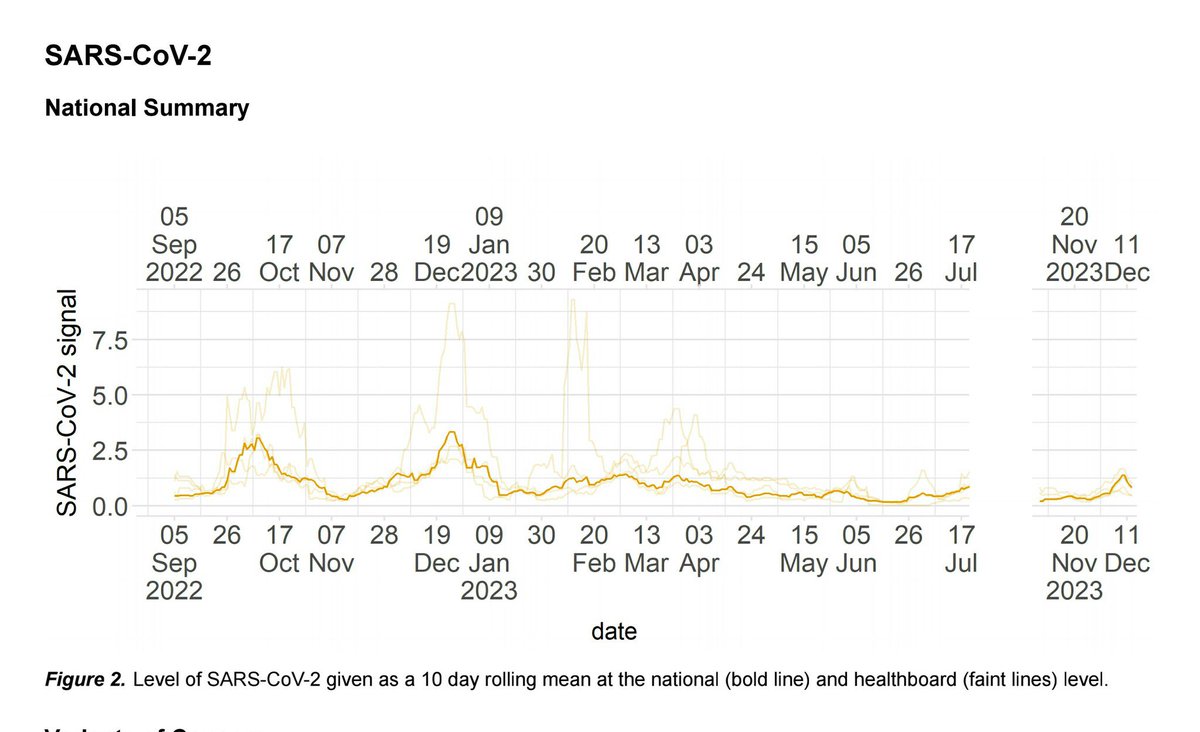
15. IRELAND 🇮🇪
Ireland also keep close tabs on the Covid viral load in their wastewater.
There’s not any sign of an uplift in their signal just yet.
hpsc.ie/a-z/nationalwa…

Ireland also keep close tabs on the Covid viral load in their wastewater.
There’s not any sign of an uplift in their signal just yet.
hpsc.ie/a-z/nationalwa…

So that concludes our whistlestop tour of the Covid wastewater surveillance in Europe (& beyond).
Two key questions arise from my research:
1️⃣ Given that practically every developed nation in the world is conducting Covid wastewater surveillance, why did England stop theirs?
Two key questions arise from my research:
1️⃣ Given that practically every developed nation in the world is conducting Covid wastewater surveillance, why did England stop theirs?

As explained in this briefing note for SAGE back in Nov 2020, “wastewater surveillance is a reliable, timely & cost-effective method” of keeping track of Covid prevalence in the community.
So why was the budget for wastewater monitoring axed in England?
assets.publishing.service.gov.uk/media/5fc8d6a2…

So why was the budget for wastewater monitoring axed in England?
assets.publishing.service.gov.uk/media/5fc8d6a2…

A recent Freedom of Information request revealed that the cost for Wales to resume their wastewater programme was just £621k.
This is a tiny cost in the greater scheme of things, especially when compared to the £billions written off in the PPE scandal.
llyw.cymru/sites/default/…

This is a tiny cost in the greater scheme of things, especially when compared to the £billions written off in the PPE scandal.
llyw.cymru/sites/default/…

2️⃣ My second question is, given the huge surges in Covid prevalence across Europe, when are our government going to take action to reduce transmission here?
The WHO, BMA & RCN have called for improved infection control in health facilities - this would be a good place to start.
The WHO, BMA & RCN have called for improved infection control in health facilities - this would be a good place to start.
https://twitter.com/_catinthehat/status/1738317524083572921
Millions of Covid vaccine doses have been stockpiled for a potential “surge” campaign this Winter.
Perhaps now would be a good time to release those vaccine doses to protect people in the coming weeks, rather than just leaving them until they expire & need to be destroyed?

Perhaps now would be a good time to release those vaccine doses to protect people in the coming weeks, rather than just leaving them until they expire & need to be destroyed?
https://twitter.com/_catinthehat/status/1725575788236337513

Perhaps the gov could also consider bringing back free Covid tests.
In the US 🇺🇸, free Covid tests can be ordered by all households and are sent out by mail:
Here in England 🏴, tests are no longer free for most people. A pack of 6 tests costs ~£10. axios.com/2023/09/20/cov…

In the US 🇺🇸, free Covid tests can be ordered by all households and are sent out by mail:
Here in England 🏴, tests are no longer free for most people. A pack of 6 tests costs ~£10. axios.com/2023/09/20/cov…

Another thing on my wishlist would be for some decent public health messaging, advising people in England to wear high quality masks (FFP2/3) in public indoor spaces and crowded places…
…like this recent public health campaign from New York. 👇🏻
…like this recent public health campaign from New York. 👇🏻
https://twitter.com/nychealthy/status/1736827473323602163
There will be a huge amount of inter-generational mixing taking place over the next few days, so a public health message reminding people of the importance of VENTILATION could also make a huge difference right now.
Perhaps they could even re-release this video from 2 years ago?
Perhaps they could even re-release this video from 2 years ago?
https://twitter.com/nhsuk/status/1472529689675800580
Schools have broken up for the Christmas holidays now - but, by the time they return in a few weeks, Covid prevalence will be almost certainly be far higher.
We desperately need mitigation measures to reduce transmission - especially via improved ventilation & air filtration.
We desperately need mitigation measures to reduce transmission - especially via improved ventilation & air filtration.
https://twitter.com/_catinthehat/status/1712469634639855895
• • •
Missing some Tweet in this thread? You can try to
force a refresh



